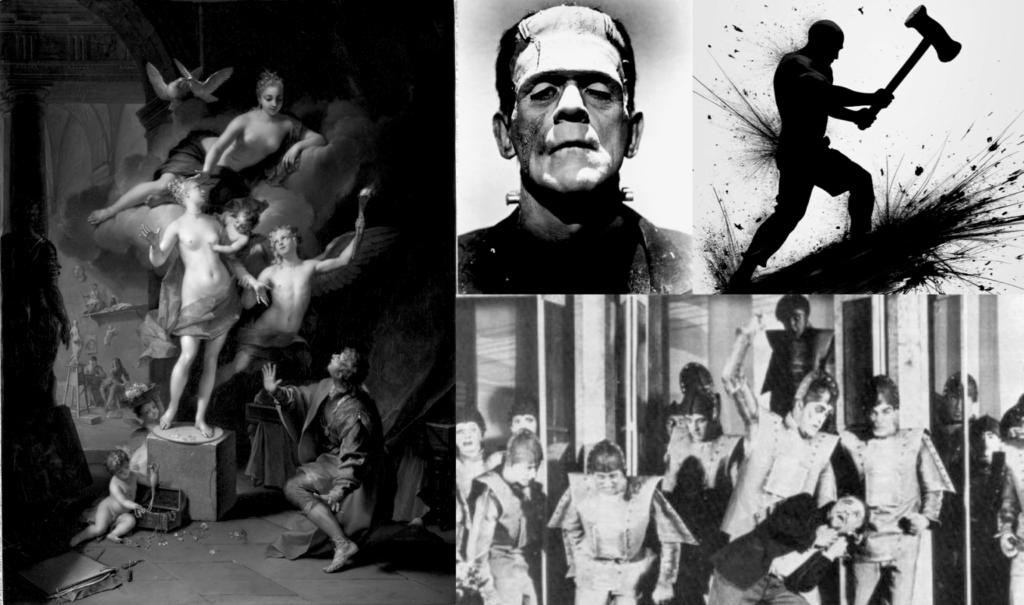EdTech Digest: Why Do Early Learners Need to Understand Al?
Our own Mitch Rosenberg and Jason Innes share their thoughts about combating the misconceptions of AI and how teaching young children is the right time to introduce AI concepts, what AI is, and what it isn’t.
As with other STEM topics, early childhood is the best time to start teaching children about AI: how it works, that it is not alive, and that it can be a tool to enhance human intelligence. What do you think, should we teach PK-5 kids about how AI works? Bring AI to young learners as part of your K-5 computer science instruction!

The article reads in part:
“Artificial Intelligence (AI) is becoming a fundamental part of modern society, but misconceptions about its role and capabilities are widespread. Much of the talk about AI focuses on it as an existential threat, a super-intelligent replacement of humanity, or simply a way to cheat. A much healthier view of AI is as a powerful new tool created by human engineers for the purpose of advancing human agency. To counter misconceptions and help develop positive, constructive attitudes about AI tools and their uses, schools must start teaching about AI early. For early childhood educators, introducing AI concepts to young learners isn’t just about technology skills—it’s about shaping how the next generation interacts with the world.
Deep-Rooted Misconceptions about AI
Like the rest of us, young students are surrounded by false narratives about AI replacing human workers, writers, and thinkers. These narratives can frighten and confuse children, and ultimately lead to misuse of the promising tools that AI provides. But schools have an opportunity to counter misconceptions about AI, by teaching students how AI works and what it can actually do.
Where do these misconceptions come from? The roots of our AI-related fears trace back to cultural myths and literature about human beings breathing life into their creations—only to see them turn on us. From the Greek myth of Pygmalion and Galatea to Mary Shelley’s Frankenstein, humans have long wrestled with the idea of creating something that rivals or surpasses our capabilities. In American folklore, the hard-working John Henry staked his life on his determination that he could lay railroad tracks faster than the new-fangled steam engine—and he lost. And in the early 20th century, Karel Čapek’s play Rossum’s Universal Robots introduced the word “robot” and stoked fears of mass-produced beings that could take over labor, and perhaps eventually, rule over humanity.
While these stories offer compelling narratives, they distort people’s thinking about AI, leading them to fear that this artificial intelligence will replace, and perhaps destroy, human intelligence. If schools and families wait until later in their development to address these misconceptions, students may have already internalized the idea that machines are autonomous entities, capable of independent thought and possibly with threatening intent. In fact, the term “artificial intelligence” itself is misleading. AI does not think, feel, or possess any form of consciousness. It simulates intelligence by following probabilistic patterns and responses. You might say AI “plays intelligence on TV.” Just as you wouldn’t trust a TV surgeon to operate on you, you wouldn’t want a simulation of intelligence to think for you.
Presenting AI as a Human-Powered Tool
Even the youngest children encounter AI—and the narratives about it—in their daily lives, so education about AI must start young. Offering a more accurate and realistic vision of AI in kindergarten or even pre-K teaches children that AI is a tool that operates without its own motivations or desires. This fosters an understanding that technology is here to serve human needs, not the other way around. Importantly, this also means teaching kids that they have a responsibility to use these tools in positive ways.
As a tool, AI can help humans think in novel ways; but AI itself cannot pursue goals or generate truly new ideas. Teaching young children that they are the creators, and that AI can be their tool, inspires them to see positive applications of AI in their daily life. Schools have the opportunity to help shape the attitudes of a future workforce that is not only comfortable with AI but also capable of using it responsibly and ethically.
Fitting AI into the Current Curriculum
For educators and administrators concerned about adding a new topic to an already complex curriculum, it’s important to emphasize that teaching AI in early childhood can be part of K-5 computer science. Teaching about AI can help meet computer science teaching goals even as it supports students’ development of computational thinking skills and provides experience with robotics tools such as developmentally appropriate robot kits. Young children need to understand first that machines don’t magically become alive or sentient like they do in movies and myths; they are tools controlled by human designers and makers. Introducing AI in an age-appropriate way encourages children to see technology as something they control—something that enhances, rather than limits, their potential.”
Read the full article.



















